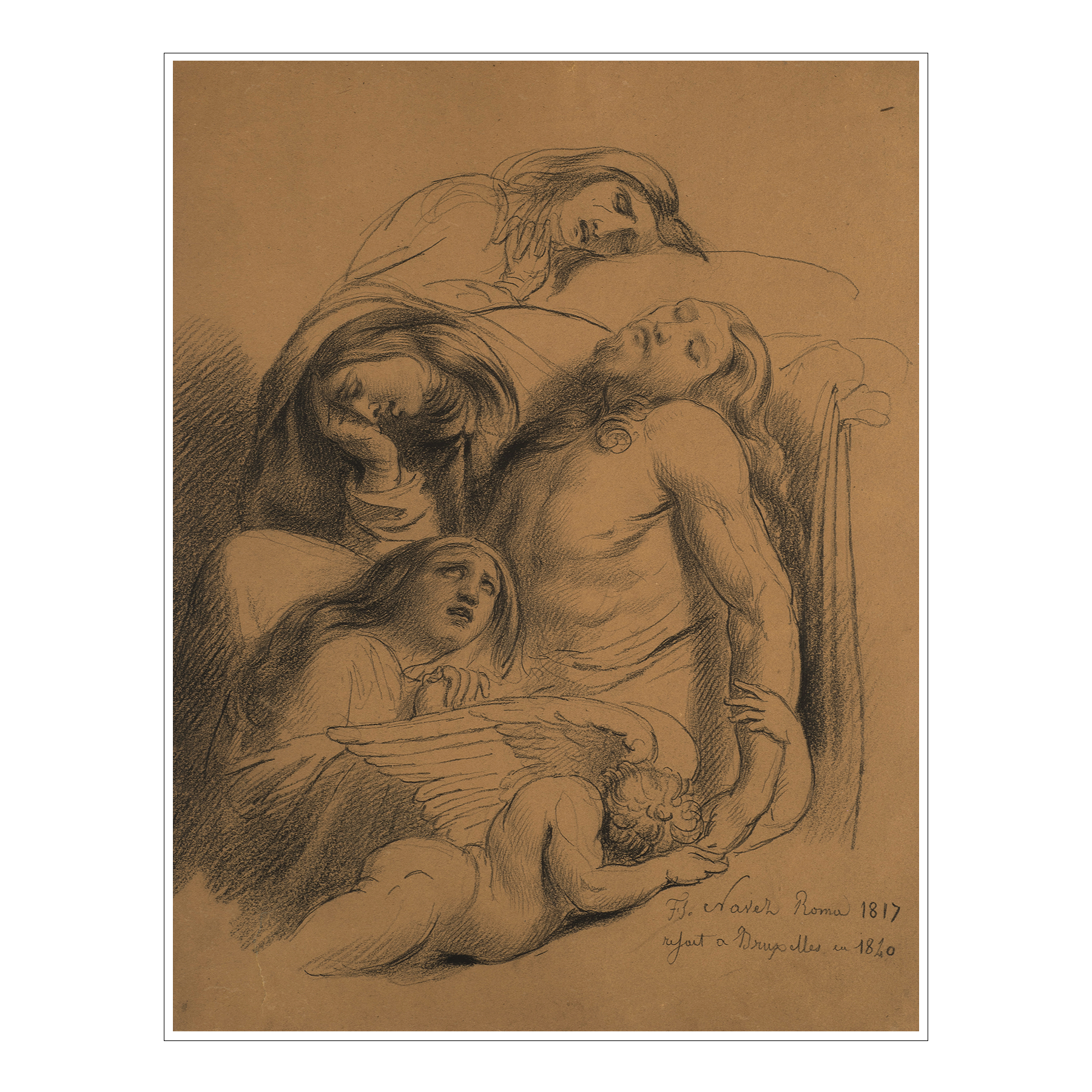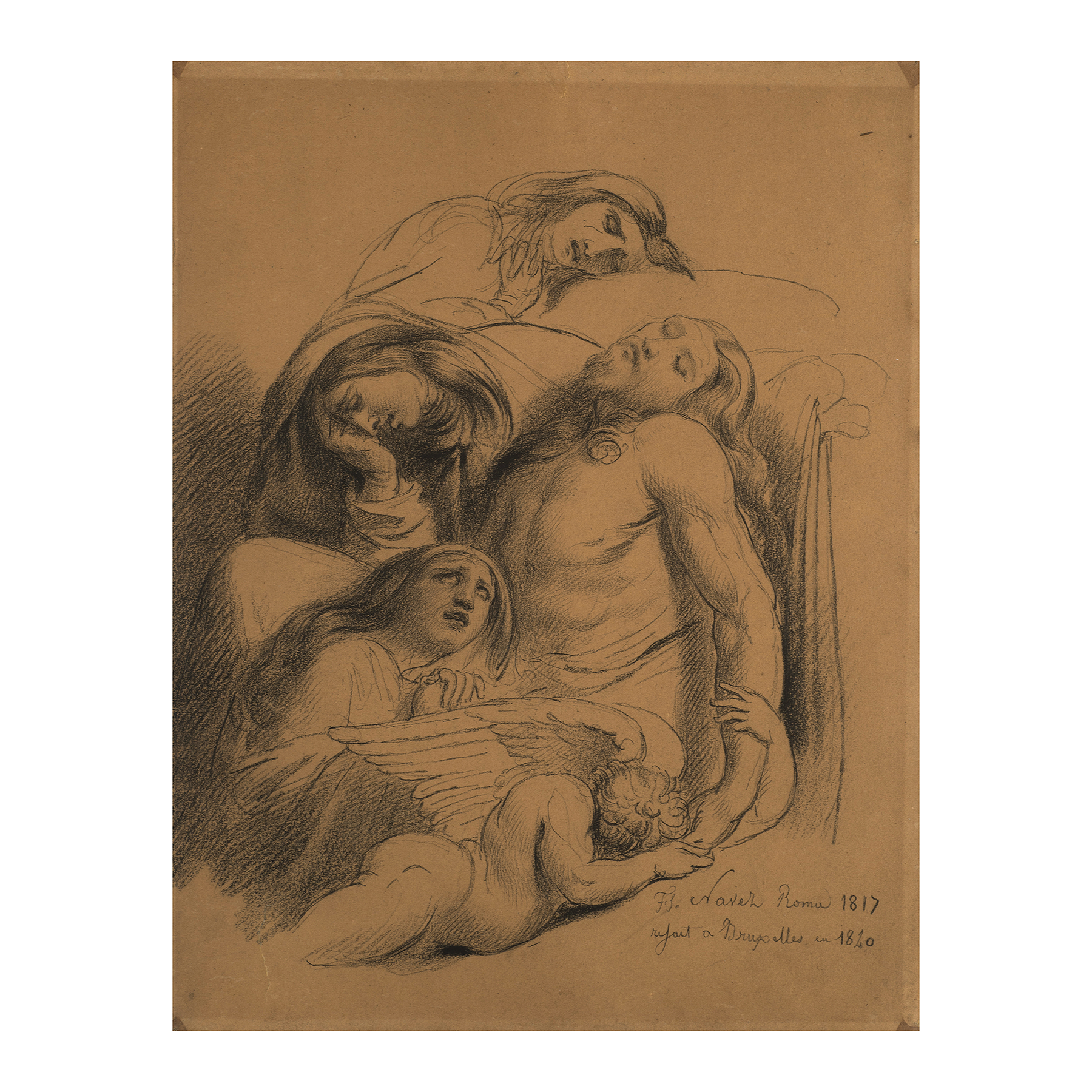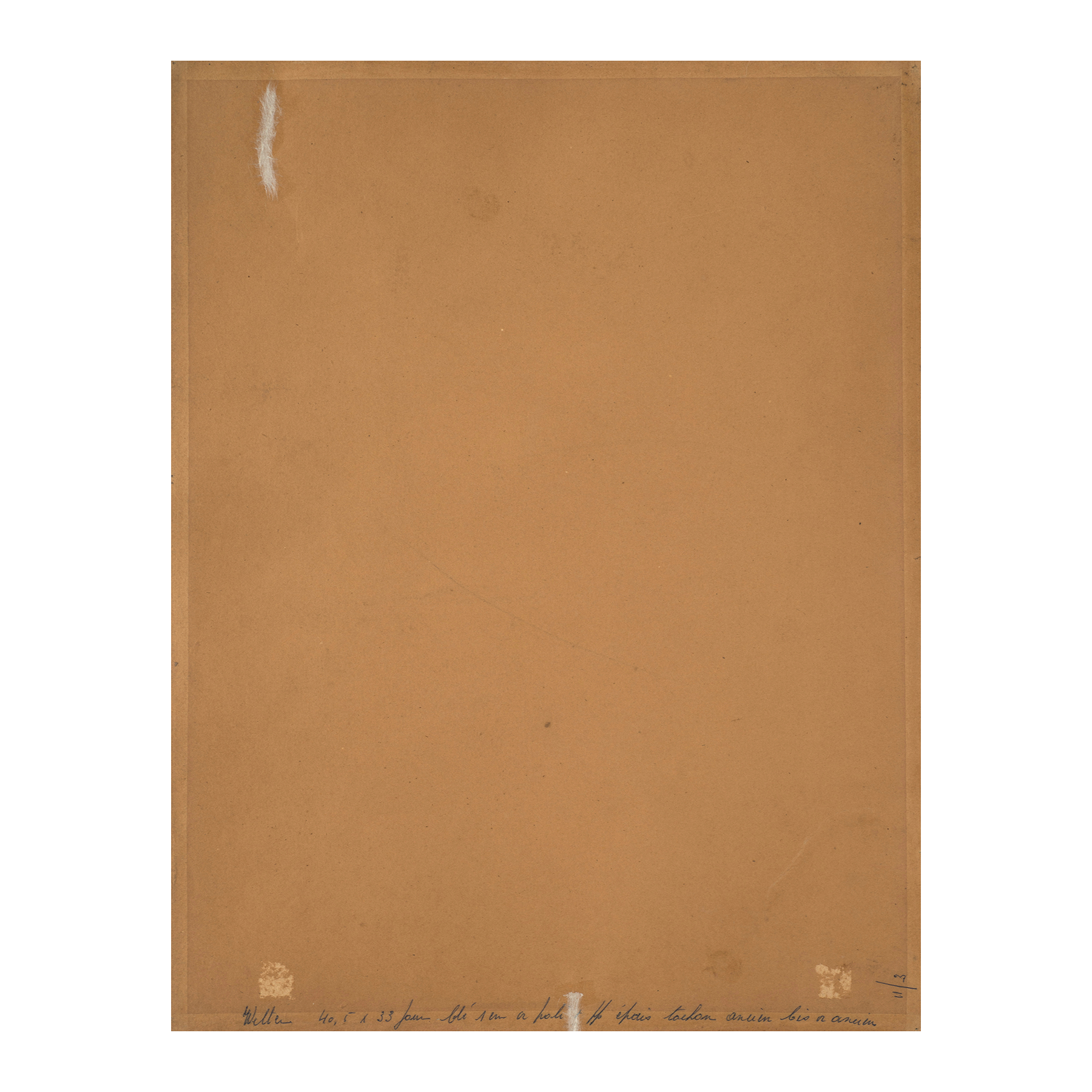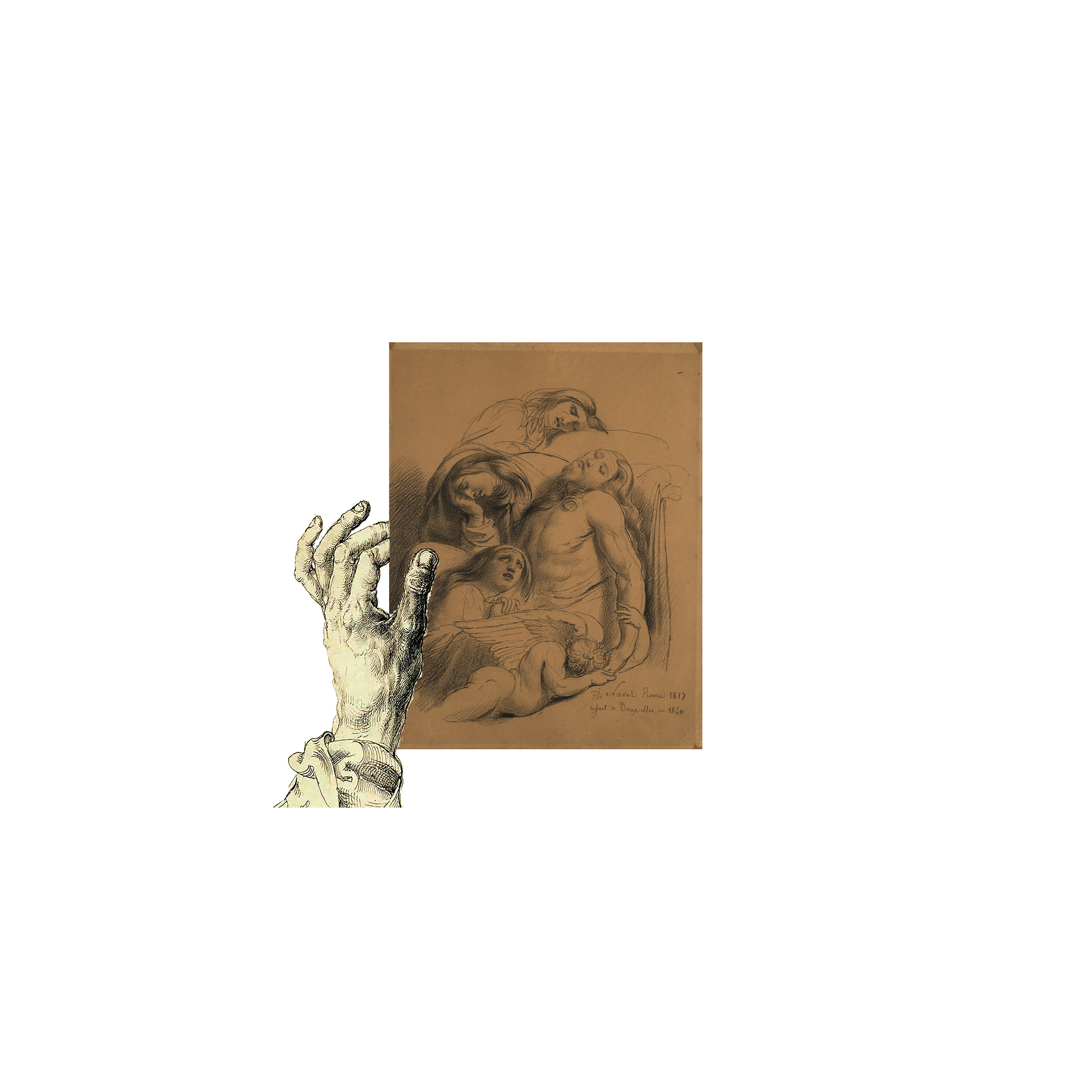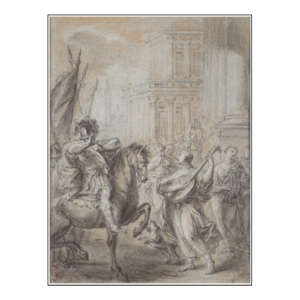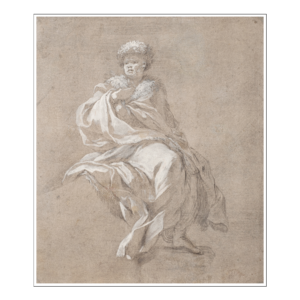François-Joseph Navez
Charleroi 1787 – 1869 Brussels
Lamentation over the Dead Christ
Black chalk on paper
285 x 220 mm – 11 1/4 x 8 11/16 in.
Signed and dated F. J. Navez Roma 1817 refait à Bruxelles en 1840, lower right
Provenance : Cologne, Lempertz sale, 16 May 2018, n° 1306.
Born in 1787 in Charleroi, François-Joseph Navez entered the Brussels academy, known as the Société des Beaux-Arts, which was co-founded and directed at the time by the painter Pierre-Joseph Célestin François. In 1812, Navez won the first prize for history painting at the Ghent Salon. He then went to Paris, where he was taught by Jacques-Louis David from 1813 to 1816. He greatly admired the latter, whom he even followed into exile in Brussels in 1816. In 1817, Navez went to Italy, where he spent four years painting genre scenes. Considered an excellent portraitist, Navez knew how to give great psychological depth to his models’ portraits. He also produced numerous historical, mythological and religious works. From 1835 to 1862 he was director of the Royal Academy of Fine Arts in Brussels.
In 1816, François-Joseph Navez produced a Deploration of Christ representing the pain and compassion of Christ’s death in a very carefully modelled grease pencil drawing (Paris, Musée du Louvre, inv. RF 52963)[1]. In 1817, during his stay in Italy, he took up this subject again for our sheet representing, in a tight composition, the dead Christ surrounded by three holy women and an angel whose attitudes and expressions create a communion of bodies. The artist then reworked his sheet, as indicated by the autograph annotation in the lower right-hand corner “redone in Brussels in 1840”: a process used for many of his works. The influence of the drawings that Navez made during his stay in Italy is notable, as he frequently reworked them throughout his career. This Lamentation over the Dead Christ, which has a powerful emotional resonance, already hints at the symbolism and realism that would characterize Belgian art from the end of the 19th century onwards.
Condition report : good condition, stains on the four corners.
[1] Denis Coekelberghs, Alain Jacobs et Pierre Loze, François-Joseph Navez (Charleroi, 1787 – Bruxelles, 1869). La nostalgie de l’Italie, Gand, Snoeck-Ducaju & Zoon, 1999, p. 75
